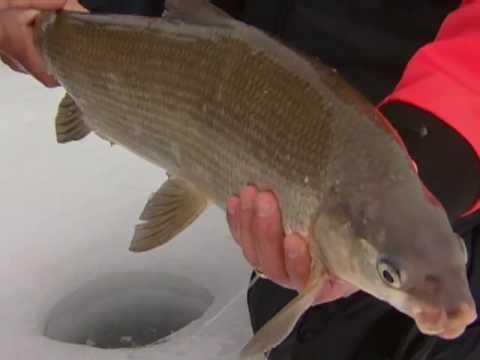
4 minute read
Radioactive Fish


North American Consumption of Radioactively Poisoned Cancerous Fish from Fukushima, Japan
By Chloe’ A.H Lewis
In March 2011, a major earthquake struck off the coast of Japan resulting in a Tsunami, hitting the town of Fukushima, which included a huge power plant; as a result three nuclear reactors suffered a severe meltdown. Radionnuclides released from the power plant reactors were detected early the following morning. This was the first sign of the environmental impact of this natural disaster. On March 15th, scientists detected high levels of radiocesiums and radioiodines (which are radioactive isotopes of cesium and iodine that form as one of the more common fission products by the nuclear fission of the given elements and other fissionable isotopes in nuclear reactors and nuclear weapons) on plants and in topsoil at and around the disaster site. At this point it was evident that this could be a major human health and environmental health concern. On March 16th, food and water sampling was initiated and monitor surveying commenced. On March 17th, researchers set provisional regulations on factors such as radioiodine, radiocesiums, uranium, plutonium, etc. to determine the safety of radioactively contaminated foods and water. It was found that all of the following were contaminated with radioactive poisons from the Fukushima nuclear explosion: tap water, raw milk, vegetables, mushrooms, fruit, nut, seaweeds, marine invertebrates, coastal fish, freshwater fish, beef, wild animal meat, brown rice, wheat, tea leaves, etc. Each of these foods received provisional restrictions, but not until up to 318 days after March 17th . That means it took over a year for all of the food restrictions to be publically established. What the world may not be as familiar with is the long-term impact of this natural disaster. Every day from the date of this event, about 400 tons of radioactive water has been spewing from the site of the nuclear power plant into the Pacific Ocean thus poisoning it. There is no hard evidence asserting whether or not the spewing has ceased — if not that means roughly 438,000 tons of radioactive water that has been spewing into the Pacific as of this past March; and around 584,000 tons is to be expected come March of 2015.

The radiation water contaminants have since reached the U.S West Coast; affected not only the U.S, but Canada and areas far northern Alaska. Other than migratory species, other Fukushima fish that have previously been marketed internationally from Japan to the U.S and Canada. It is unclear whether or not this trade has persisted despite the Fukushima disaster. It was also unclear as to whether or not these marketed fish carry radioactive

contaminants. There is some evidence that these radioactively contaminated fish and fish native to the North American coast (including wild Alaskan Salmon and Canadian whitefish) contain bloody, malignant (cancerous) tumors and lesions on and throughout their bodies. Realize that fish are not the only form of life directly that have possibly been effected by this disaster. The radiation ailments discovered in suffering Pacific fish have crossed the species barrier. There have since been various species of walruses, seals, sharks, and polar bears that have been found to be suffering from seemingly the same radiation ailments such as bloody lesions, external tumors, and fur/hair loss (one of the primary signs of radiation poisoning), however there is no conclusive evidence pointing to the Fukushima disaster and radioactive contaminants thereof as being the ultimate causation.
Radioactive isotopes were found in marine animals local to Fukushima, Japan and in migratory Pacific Bluefin Tuna. In August 2011, Pacific Bluefin Tuna samples were collected off the coast of California and showed lower radioactivity concentrations than those of marine life at and around Fukushima, Japan. However, this does not mean that the Tuna marketed here in the United States were not contaminated at all. This simply means contaminant levels were lower than previous recordings of marine life elsewhere. In order to draw stronger correlations and possibly causations from the radioactivity levels of Pacific Ocean and Pacific marine life to all possible health impairments, scientists researched and calculated the radioactivity level doses of Fukushima-derived radionuclides and naturally occurring radionuclides to human fish consumers (including countries having migratory fish that were contaminated and countries that market the specific fish that were contaminated) and Pacific marine life.
After much research, it was found that the levels of radioactive contaminants were comparable to or less than to the levels that are typically consumed by humans or naturally occurring in food items, air travel, medicine, etc. What continues to remain uncertain — perhaps the most alarming global health concern of all — is the assessment of cancer risk at these existing doses of radioactive contaminants. So far, scientists have only been able to statistically prove that the consumption of the radioactive contaminated Pacific Bluefin Fish by fisherman can be estimated to result in 2 additional fatal cancer cases per 10 million similarly exposed human consumers.
Sources
Fisher, NS., Beaugelin-Seiller, K., Hinton, TG., Baumann, Z., Madigan, DJ., & Garnier-Laplace, J. “Evaluation of radiation doses and associated risk from the Fukushima nuclear accident to marine biota and human consumers of seafood”. Proceedings of the National Academy of Sciences of the United States of America. 110:16. (2013): 1067010675. Print.
Hamada, N., Ogino, H., & Fujimichi, Y. “Safety regulations of food and water implemented in the first year following the Fukushima nuclear accident”. Journal of Radiation Research. 53:3. (2012): 641-671. Print.










